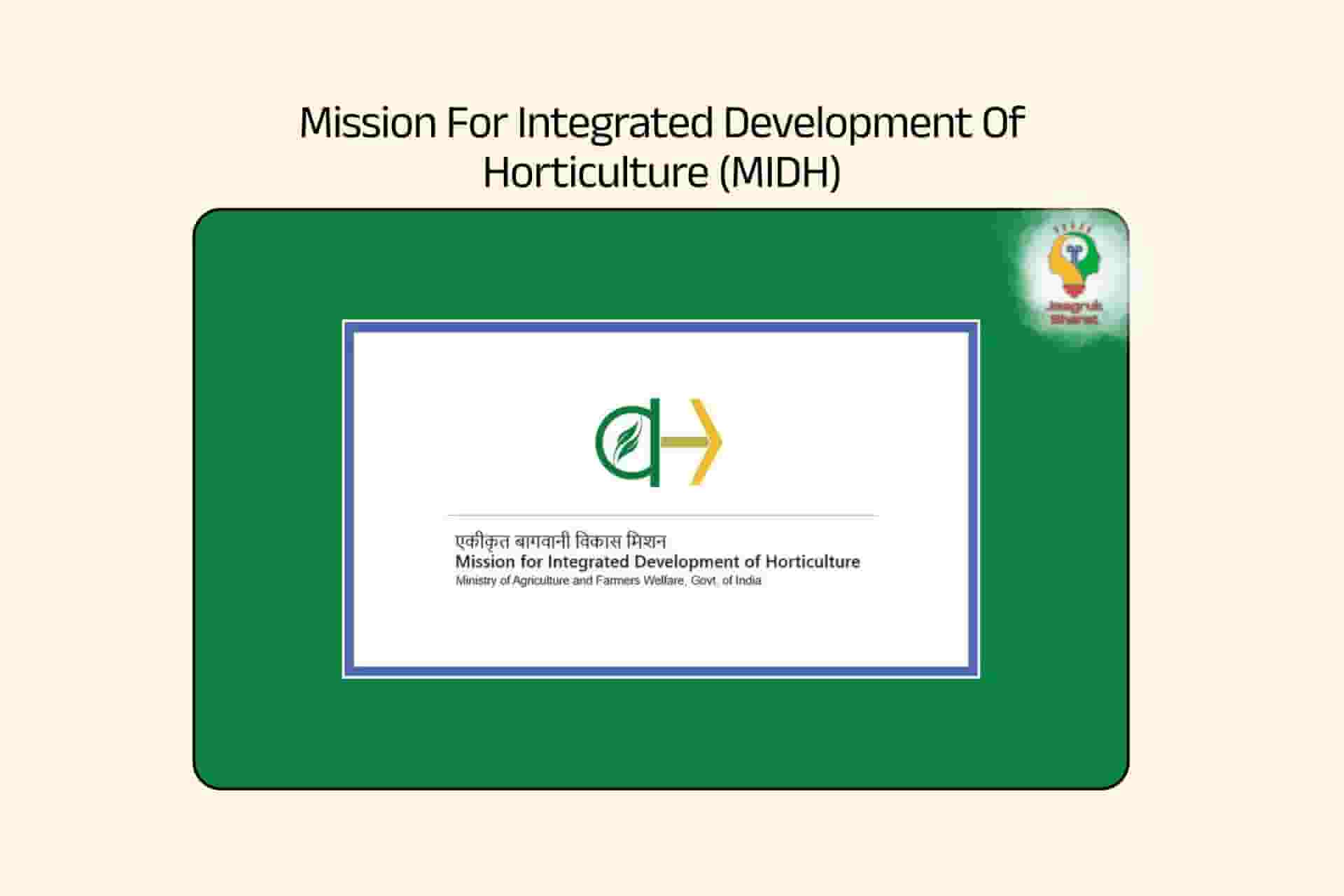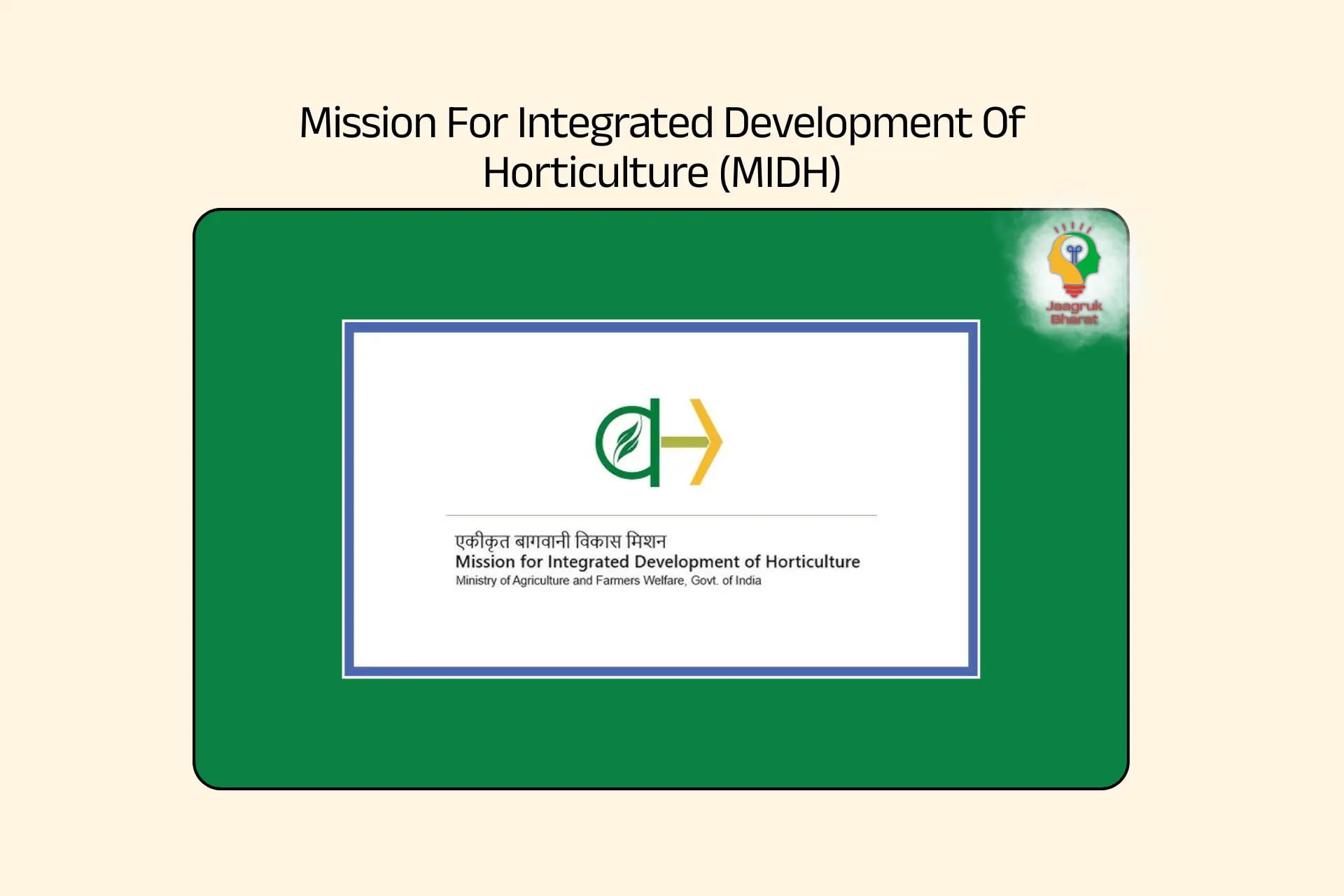Mission For Integrated Development Of Horticulture (MIDH) – Govt Scheme Boosting Farmers’ Income & Modern Horticulture In India
Updated: 28-10-2025 at 3:30 PM
1k


MIDH stands for the Mission for Integrated Development of the Horticulture scheme supported by the Central Government and initiated in 2014 under the Green Revolution – Krishonnati Yojana. The major goal is to help in the enhancement of the horticulture industry of India by providing funds and using better technologies, as well as machinery. Crop focus comprises fruits and vegetables, spices, flowers and bamboo with an aim at raising production, farmers’ income and food diversity.
This article will cover attributes like the Mission for Integrated Development of Horticulture objectives, the Integrated Development of Horticulture, and much more.
Also Read: Horticulture In North Eastern Hills: Horticulture Mission.
Overview
To understand the Mission for Integrated Development of Horticulture (MIDH) better, it helps to look at its core details in one place. The table below gives you a glance at the scheme’s foundation and purpose.
| Scheme Name | Mission for Integrated Development of Horticulture (MIDH) |
|---|---|
| Year of Launch | 2014 |
| Implemented Under | Green Revolution – Krishonnati Yojana |
| Focus Areas | Fruits, vegetables, spices, flowers, coconut, bamboo, and more |
| Financial Assistance | Provided for nursery setup, area expansion, organic farming, and post-harvest infrastructure |
| Coverage | Pan India with specific sub-schemes for NE and Himalayan States |
| Application Mode | Online (HORTNET Portal) and Offline |
What Is The Mission Of The Integrated Development Of Horticulture?
MIDH is a government action plan designed to support the all-round development of the horticulture value chain, including production, post-harvest handling, marketing and capacity development. Some of the crops that are nurtured include: fruits, vegetables, spices, and flowers, among others.
Sub-Schemes And Area Of Operation
MIDH is not a single programme but a combination of targeted sub-schemes spread across different regions. The table below explains their area of operation for easy reference.
| Sub-Scheme | Target Group / Area |
|---|---|
| National Horticulture Mission (NHM) | 384 districts in 23 States/UTs via State Horticulture Missions (SHM) |
| Horticulture Mission for NE & Himalayan States (HMNEH) | NE and Himalayan States like Arunachal Pradesh, Himachal Pradesh, J&K, etc. |
| National Horticulture Board (NHB) | All States and UTs are focusing on commercial horticulture |
| Coconut Development Board (CDB) | Coconut-growing States and UTs |
| Central Institute for Horticulture (CIH) | NE states are focusing on HRD and capacity building |
Also Read: Learn How MIS-PSS Protects Farmers And Promotes Agricultural Stability
Activities For Which Financial Assistance Is Provided
Financial assistance is provided for the development of horticultural crops, post-harvest management, cold storage facilities, and setting up nurseries for the production of quality planting material.
-
Establishing the growth of nurseries and tissue culture units.
-
Residential landscape for utilising more space in orchards, gardens and flowers.
-
Restyling worn-out and low-yielding gardens.
-
Encouraging protected agriculture using poly-house and greenhouse:
-
Promoting organic farming and organic certification.
-
Designing water sources and systems of watershed management.
-
Favouring beekeeping and pollination since it helps in carrying out pollination activities.
-
Introduction of horticulture mechanisation.
-
Accomplishing post-harvest and marketing amenities.
Key Elements Of The MIDH Mission
The key elements of MIDH include the creation of infrastructure, skill development, research and development, and the promotion of organic farming in horticulture.
-
Baseline survey as well as participation of Panchayati Raj institutions.
-
The strategic, output-oriented production plans are more cluster-based and have been driven by the demands made on them.
-
Application of inputs such as high-density land, plastic, and improved rising cycles.
-
Production entitlement and capacity development of farmers.
-
Demonstration increased efficiency, thus the mechanisation of tasks, increasing the representation of modern techniques.
-
Proper infrastructure of cold chains and marketing networks.
-
Systematic supervision and database creation.
Also Read: Pradhan Mantri Kisan Samrudhi Kendras
Funding Pattern For The Integrated Development Of Horticulture
The funding pattern varies, with assistance being provided in a mix of central and state shares, and the contributions differ based on the project category, state, and geographical location.
-
The scheme follows a shared funding model between the Central and State Governments.
-
Specific interventions may have different financial assistance criteria based on guidelines.
Features Of The Integrated Development Of Horticulture
Every scheme has unique aspects that make it stand out. Here are the major features of MIDH that highlight its scope and effectiveness.
-
Its focus is on working productivity and the enhancement of product quality standards.
-
Extension services for the improvement of post-harvest management and marketing equipment.
-
The process for skill development for the rural youths.
-
To increase scale efficiency, the SWC strengthened farmer groups.
Objective Of The Integrated Development Of Horticulture
The objective of MIDH is to increase the area and production of horticultural crops, improve post-harvest management, and enhance income generation for farmers.
-
Support the development of the horticulture industry in its entirety.
-
Promote vertical linking of smallholder farmers in groups like FIGs and FPOs.
-
Sustainable intensification of agriculture for increasing productivity, farmer revenue and nutritional status.
-
Welfare increase of water through micro irrigation improves the water efficiency and productivity.
-
Create employment opportunities for horticultural products and businesses in cold chain industries.
Also Read: Digital Agriculture Mission: Accelerating Farmer IDs For India’s Agriculture Growth
What Are The Benefits Of The Integrated Development Of Horticulture?
From farmers to consumers, MIDH brings advantages across the chain. The points below explain the key benefits that make this scheme impactful.
-
Higher crop yields and more speciality crops, which are high-value horticulture crops.
-
Thus, increasing the shelf life of the perishable products through an improved cold chain facility.
-
Increased post-harvest management, processing and marketing.
What Is The Eligibility Criteria Of The (MIDH)?
Open to all farmers and registered societies, and any state government of the states of the union.
What Is The Application Process For The Mission for Integrated Development of Horticulture (MIDH)?
Farmers and other stakeholders can apply by submitting their proposals to state horticulture departments or district horticulture offices, which then review and forward them for approval. Below is the step-by-step guide to applying for this government scheme. To understand it better, read the following points carefully:-
Online Process:
Step 1: Visit the HORTNET Portal.
Step 2: New users should choose the state and log in using the user type “Department User.
Step 3: Members can register just by completing their details themselves.
Step 4: Fill out the farmer registration form to the end and send it.
Step 5: Remember to write down your Unique ID for application and grievance tracking.
Also Read: What To Know About Agriculture Research Stations And Laboratories Scheme In India?
Offline Process:
Step 1: You should then contact the District or Block Horticulture Officer.
Step 2: Enclose your application and project concept.
Step 3: The State Horticulture Mission will go through the proposal and give it final approval.
Step 4: It is important to note that those who are approved for the assistance do get approved for the funds.
List Of Documents Required For The Mission For Integrated Development of Horticulture (MIDH)
The documents required include identity proof (Aadhaar), bank account details, land ownership records, and project proposals for specific activities related to horticulture.
-
Land documents
-
Photographs
Note: Other supporting papers may also change depending on the type of intervention and state standards.
Challenges For Integrated Development of Horticulture
While MIDH has promising outcomes, it also faces certain hurdles in implementation. Let’s look at the main challenges that need attention for its success.
-
High levels of post-harvest that result from poor handling infrastructure.
-
Lack of effective supply chain management/ link, and marketing.
-
Relatively low usage of new technology by most farmers.
Conclusion
The Mission for Integrated Development of Horticulture (MIDH) provides crucial funding and resources, innovative solutions, and the availability of agri-marketing solutions to significantly strengthen India’s horticulture industry. This makes horticulture one of the most promising sectors for rural development through increased productivity, increased income among farmers, and the application of sustainable practices. This is an opportunity which farmers should take fully to develop their agricultural prowess.
For any queries, share your opinions, or any updates or information, visit Jaagruk Bharat's community page. Be a part of India’s biggest Jaagruk community.
0
0
1k
0
0
1k Views
0
No comments available





Our Company
Home
About
T&C
Privacy Policy
Eula
Disclaimer Policy
Code of Ethics
Contact Us
Cancellation & Refund Policy
Categories
Women
Insurance
Finance
Tax
Travel
Transport & Infrastructure
Food
Entertainment
Communication
Government ID Cards
E-commerce
Traffic guidelines
Miscellaneous
Housing and Sanitation
Sports
Startup
Environment and Safety
Education
Agriculture
Social cause
Employment
Disclaimer: Jaagruk Bharat is a private organization offering support for documentation and government scheme access. We are not affiliated with any government body. Official services are available on respective government portals. Our goal is to make processes easier and more accessible for citizens.
All Copyrights are reserved by Jaagruk Bharat